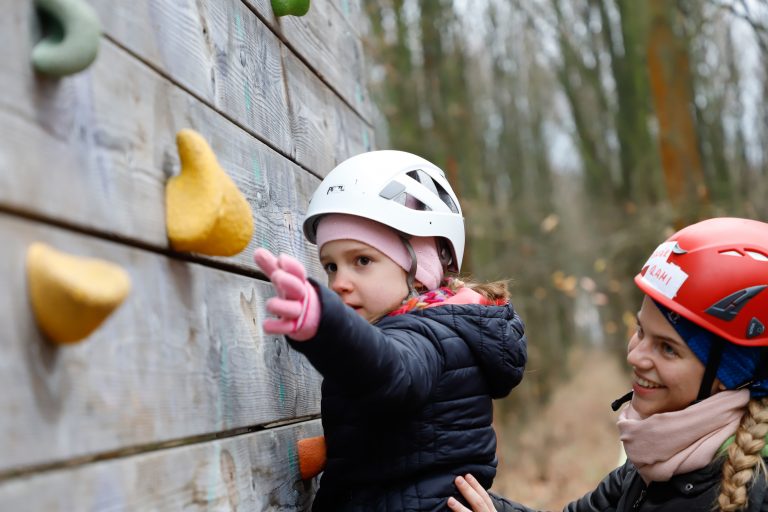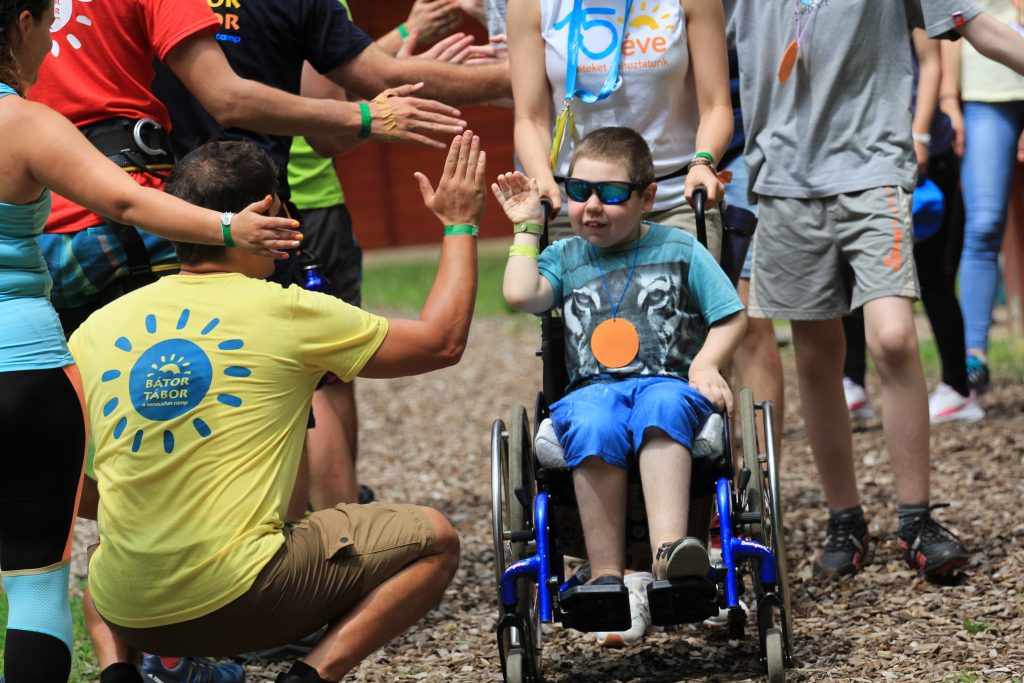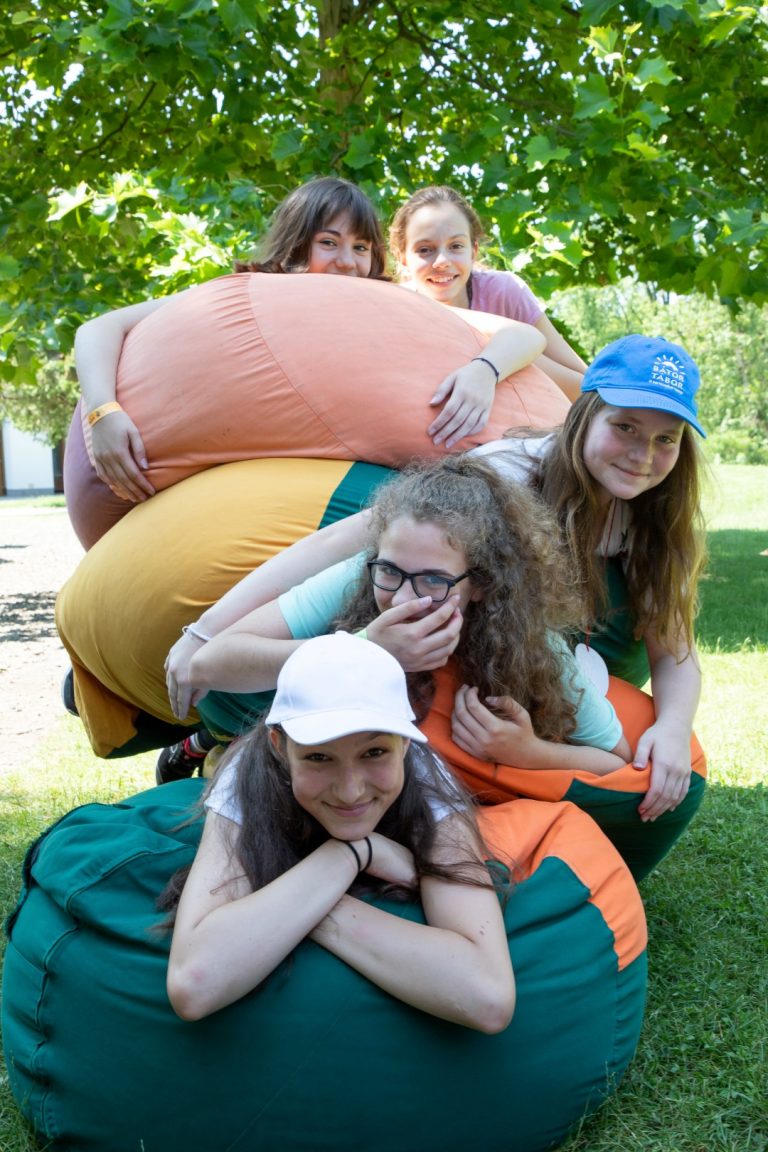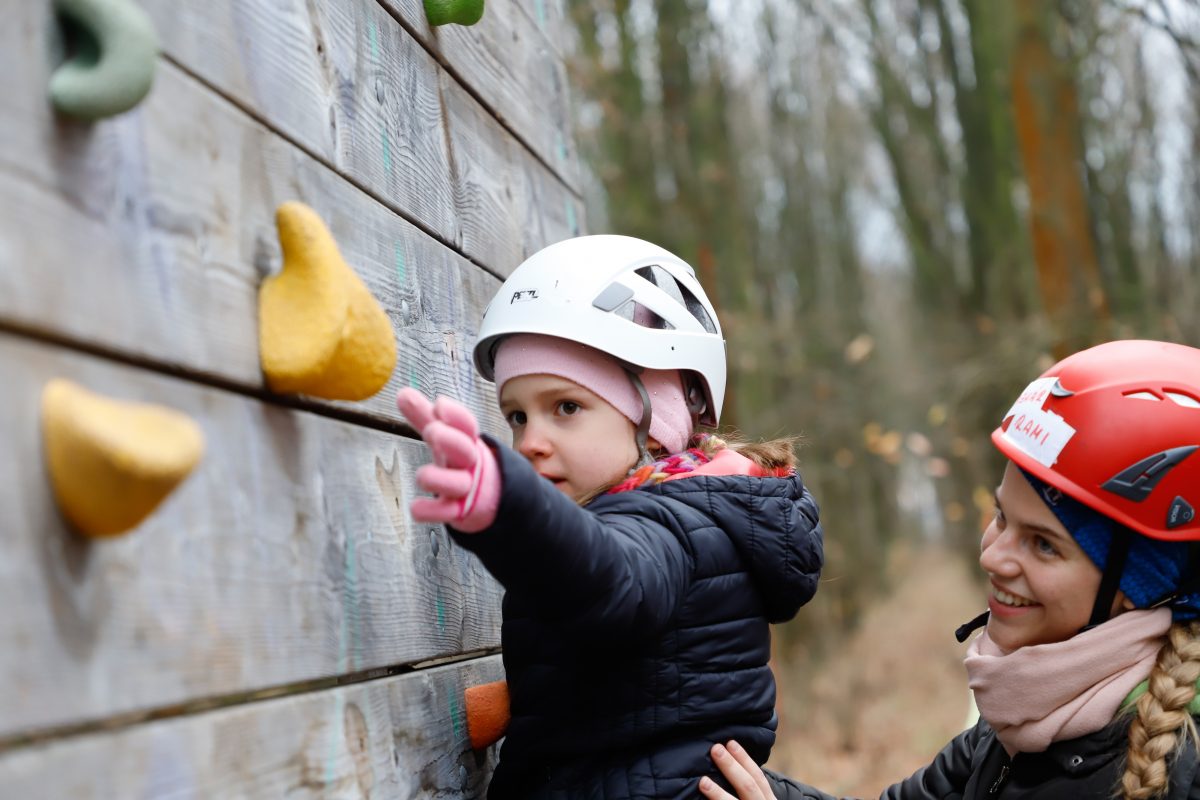If you already have a clue what therapeutic recreation is about, let’s see how it all looks like in practice! We have collected the main criteria of a playing session, which you can apply at any time, tailored to your own group (class, children, and colleagues)!

PREPARATIONS: safety – safety – safety!
The first and most important step in the therapeutic recreation (TR) methodology is to create a physically and emotionally safe atmosphere and environment. Kids (and also adults) can become relaxed and can indulge in the game only if they feel themselves safe.
Start with yourself! The group can only connect to you if you also feel comfortable in your role. Think about what you really need. Do you feel safe when you are having a co-trainer with you? If so, find a person who can help you to lead the session! Or do you feel safe if you discuss the schedule with someone? Do it! Do you need another coffee before the session? Plan with it! Are you too excited? No worries, it also happens with experienced trainers when they meet new participants for the first time.
Safe Space Always have enough information about that space in which the session takes place, whether it’s a classroom, an open field, or any other place. It is important to get there on time, so you can arrange everything. To create physical safety, think about the age group of the expected participants, and identify the problematic [dangerous] points accordingly (for example, availability of sockets for younger children, shelf/furniture stability, and so on). Pay attention to physical safety throughout the whole session. Play only those games that can be safely executed! This is always the responsibility and task of the session leader/trainer.
That little extra attention Depending on what kind of activity you are preparing for, arrange the chairs. If it is feasible to have some snacks during the session, prepare them beforehand, get the extension cord and kettle ready for making a tea. Printed materials should await the arriving participants on the chairs. If the group is new, put out labels or name tag lanyards so you can address them by their name when they arrive.
The preparations take a maximum of half an hour, but it means a lot to the participants if they feel you have been waiting for them and you have prepared for the time you spend together.
INTRODUCTION: Starting the session
Participants’ sense of security is also enhanced if they know what will happen to them during the time they spend with you. How can you ensure this? Tell them the schedule, and you can also put it somewhere so they can easily follow the schedule.
Even though during the day you will most likely deviate from the pre-arranged schedule – which is not a problem, as this will allow you to better adapt the session to the needs of the participants – try to keep the closing time!
However, in case the program gets longer than planned, make sure to discuss it with the group.

GAMES and the TR CYCLE
When choosing the games and activities, make sure that the session has a well-built structure: at the beginning, it is worth preparing with warm-up, so-called icebreaker games. Then can come the main game or a conversation on a certain topic. And at the end the group evaluates the time spent together, participants give feedback to each other and to you as well.
Click here for game ideas!
In this session, we guide the participants through the elements of the already known TR circle.
The first step in this circle is the challenge, which you provide to the participants with games which can be played on various levels. This is followed by the sense of success, as they have completed their chosen level. You give them feedback on this, as a result of which they discover a new skill within themselves or strengthen an already known skill. When they come across a similar situation next time (for example, they continue the game), they will probably choose a higher-level challenge, and so the TR circle will actually continue as an endless spiral.
How can you implement the TR circle?
TR is based on people’s basic psychological needs, that is, autonomy, competence, and a sense of belonging to somewhere. How can you provide all of these to them in your programme?
Autonomy Give them the opportunity to choose! Participants should decide if they want to take part in the next game or not. You should also prepare with several levels of that game so the participants can choose the challenge that best suits them.
Let’s take the UNO card game as an example: you can decide how many rule cards you start the game with. Will you put them all in the first round, or will you first use only those rule cards which expect you to take extra cards and you decide to gradually include the rest of the rule cards (which turns the round back or asks for a specific colour)?
The more choices you provide, the safer they can feel as they have defined the level of challenge and thus they can regard the task as their own. It is important that you should prepare with these levels before the session! Bear in mind what you can offer if a task is solved too quickly or, conversely, it seems too difficult. When someone chooses a level, it’s worth paying attention to make it really challenging for him/her as he/she will learn new things about himself/herself this way!
Competence The sense of competence is strengthened in the participants during the feedback. At the beginning of the session, everyone has a picture of themselves as they know what their strengths are. During the games, they will hopefully discover new, until now unknown strengths, which can be used in the future. They will feel competent in such situations, as they have previously experienced that they are actually able to solve that certain task.
Belonging to a community As soon as you enter the room and declare that the participants of the session are those who are present, you are already creating a community. With the steps listed earlier, you can create an environment where participants can be themselves, and you can be a calm and trustworthy leader of the group.

FEEDBACK
Giving feedback is an essential part of the TR circle: from a quick “like” signal to a detailed feedback, it can have many forms. Its appropriate place and time highly depends on the situation.
You may discuss it in individually with the participants during the session, but at the end of the main game, it is definitely worth leaving more time to look back at the work you did together.
Feedback can come from you, but also from other members of the group (the latter is sometimes more significant than the feedback from the session leader). It is important that participants share their feelings – even the difficult ones.
Feedback can be verbal, but you can also use different tools and panels to help them think over the events of the session.
Take a picture of a tree, as an example: they can gather the qualities they already possessed to its root; they may write down what they have just experienced about themselves on its trunk, and they may put to the leaves what they want to improve next time, and they can also think about how they can achieve that.
Thanks to the feedback, the participants are likely to either learn something new about themselves or reinforce a previously known skill. It is not always realised though during the session how they can use it for later on, which is not a problem at all! The point is to create the opportunity for learning and development, and trust that all this will flourish one day. That’s why you should never be reluctant to give feedback, even in the simplest form, because you might notice something they would have slipped over.
If they fail
And what happens if they fail the challenge? This can also happen, but you should not be afraid of it, as we can learn a lot about ourselves from these situations as well. We just need to shift our thinking from failure to what we can learn from this situation.
We hope that with these tips and ideas, we have managed to bring a little Bátor Tábor spirit into your own environment as well!
